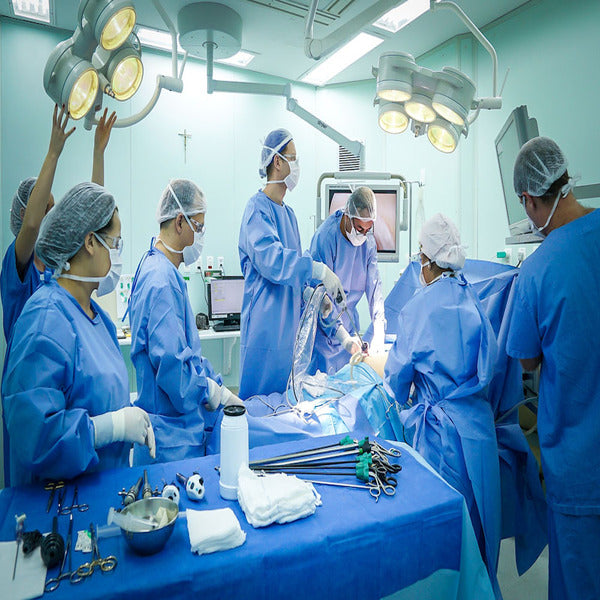Collection: Hospitals and Operating Rooms
Low air humidity affects both people's health and well-being. During winter, the air inside buildings is heated to a temperature of 20-25 °C, with the consequence that the relative humidity drops to values of 10-30%, which is perceived as dry air, even if it is foggy outside. Dry air favors the evaporation of water from the skin, which cracks and causes dryness of the throat and nose and respiratory tract, etc., favoring the onset of typical winter diseases. It is for this reason that air conditioning systems that control both air temperature and humidity are used in hospital wards; the latter being kept not too low, but not too high either. To prevent the spread and proliferation of biological contaminants, humidity should ideally be maintained between 40% and 60% RH. Precise humidity control also helps protect electronic equipment from electrostatic discharges, making the hospital safer for staff and visitors and protecting patient health at the same time. Dry winter air increases dust in the air from bits of material and skin particles that people shed. This causes problems for people with allergies or asthma, which can be reduced by keeping the right level of humidity in the air.
According to European Directive 2002/91/EC, EN ISO 13790:2008, EN 13779:2008 VDI 6022, DIN 1946-4, Italian Presidential Decree dated 14 January 1997, UNI11425 (just to name a few) ventilation and air conditioning systems in operating theatres must ensure optimal temperature and humidity conditions for the work of doctors, also taking into account the needs of the patient. Humidification systems must be designed in such a way as not to contribute to the production and spread of contaminants, and to be easy to access, clean and control. The emphasis is on continuity of service, in particular in operating theatres: humidifiers are used that guarantee operational continuity and "do not stop" for maintenance. Precise humidity control is therefore not just an accessory, but a legal requirement.






